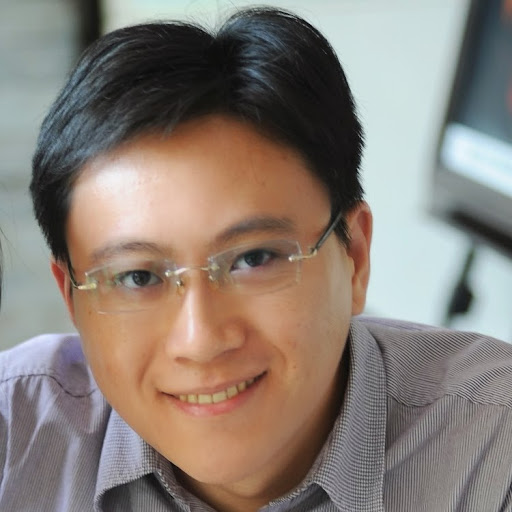Jin Lu
age ~51
from Boise, ID
- Also known as:
-
- Lu Jin
- Phone and address:
- 5126 E Bandsaw St, Boise, ID 83716
Jin Lu Phones & Addresses
- 5126 E Bandsaw St, Boise, ID 83716
- Bristow, VA
- 10861 Gambril Dr APT 33, Manassas, VA 20109
- Cleveland, OH
- Potsdam, NY
Work
-
Company:Taiwan semiconductor manufacturing company limitedJul 2012
-
Position:Engineer
Education
-
School / High School:National Taiwan University2006
-
Specialities:Master in Physics
Skills
C/C++ Optical simulation: FDTD DDA
Us Patents
-
Methods And Apparatuses For Removing Polysilicon From Semiconductor Workpieces
view source -
US Patent:7754612, Jul 13, 2010
-
Filed:Mar 14, 2007
-
Appl. No.:11/686079
-
Inventors:Jin Lu - Manassas VA, US
-
Assignee:Micron Technology, Inc. - Boise ID
-
International Classification:H01L 21/302
H01L 21/461 -
US Classification:438692, 257E21224, 257E21228, 257E2123, 257E21307, 438690, 438753
-
Abstract:Methods and apparatuses for removing polysilicon material from a semiconductor workpiece are disclosed. A particular method includes contacting a polishing pad with a semiconductor workpiece having a surface polysilicon material. The method also includes disposing a polishing liquid between the polysilicon material and the polishing pad. The polishing liquid contains an oxidizer that does not include metal elements. The method further includes moving at least one of the semiconductor workpiece and the polishing pad relative to the other while the semiconductor workpiece contacts the polishing pad and the polishing liquid. At least some of the polysilicon material is removed while the polysilicon material contacts the oxidizer in the polishing liquid, as at least one of the semiconductor workpiece and the polishing pad moves relative to the other.
-
Method And Apparatuses For Removing Polysilicon From Semiconductor Workpieces
view source -
US Patent:8071480, Dec 6, 2011
-
Filed:Jun 17, 2010
-
Appl. No.:12/818019
-
Inventors:Jin Lu - Manassas VA, US
-
Assignee:Micron Technology, Inc. - Boise ID
-
International Classification:H01L 21/302
H01L 21/461 -
US Classification:438692, 257E21224, 257E21228, 257E2123, 257E21307, 438690, 438753
-
Abstract:Methods and apparatuses for removing polysilicon material from a semiconductor workpiece are disclosed. A particular method includes contacting a polishing pad with a semiconductor workpiece having a surface polysilicon material. The method also includes disposing a polishing liquid between the polysilicon material and the polishing pad. The polishing liquid contains an oxidizer that does not include metal elements. The method further includes moving at least one of the semiconductor workpiece and the polishing pad relative to the other while the semiconductor workpiece contacts the polishing pad and the polishing liquid. At least some of the polysilicon material is removed while the polysilicon material contacts the oxidizer in the polishing liquid, as at least one of the semiconductor workpiece and the polishing pad moves relative to the other.
-
Post-Tungsten Cmp Cleaning Solution And Method Of Using The Same
view source -
US Patent:20120244705, Sep 27, 2012
-
Filed:Mar 23, 2011
-
Appl. No.:13/069408
-
Inventors:Hongqi LI - Boise ID, US
ANURAG JINDAL - Boise ID, US
Jin Lu - Boise ID, US -
International Classification:H01L 21/306
C11D 7/26 -
US Classification:438692, 510175, 257E2123
-
Abstract:A post-W CMP cleaning solution consists of carboxylic acid and deionized water. The carboxylic acid may be selected from the group consisting of (1) monocarboxylic acids; (2) dicarboxylic acids; (3) tricarboxylic acids; (4) polycarboxylic acids; (5) hydroxycarboxylic acids; (6) salts of the above-described carboxylic acids; and (7) any combination thereof. The post-W CMP cleaning solution can work well without adding any other chemical additives such as surfactants, corrosion inhibitors, pH adjusting agents or chelating agents.
-
Substrates Comprising Integrated Circuitry, Methods Of Processing A Substrate Comprising Integrated Circuitry, And Methods Of Back-Side Thinning A Substrate Comprising Integrated Circuitry
view source -
US Patent:20130313718, Nov 28, 2013
-
Filed:May 24, 2012
-
Appl. No.:13/480341
-
Inventors:Sony Varghese - Boise ID, US
Andrew Carswell - Boise ID, US
Kozaburo Sakai - Boise ID, US
Andrey V. Zagrebelny - Eagan MN, US
Wayne Huang - Boise ID, US
Jin Lu - Boise ID, US
Suresh Ramakrishnan - Boise ID, US -
Assignee:MICRON TECHNOLOGY, INC. - Boise ID
-
International Classification:H01L 23/498
H01L 21/66
H01L 21/768 -
US Classification:257774, 438667, 438 16, 257E23067, 257E2153, 257E21577
-
Abstract:A method of processing a substrate having integrated circuitry includes forming through-substrate vias partially through the substrate from a first side of the substrate. At least one through-substrate structure is formed partially through the substrate from the first substrate side. The at least one through-substrate structure extends deeper into the substrate than do the through-substrate vias. Substrate material is removed from a second side of the substrate to expose the through-substrate vias and the at least one through-substrate structure on the second substrate side. Additional implementations are disclosed. Integrated circuit substrates are disclosed independent of method of manufacture.
-
Memory Arrays And Methods Used In Forming A Memory Array Comprising Strings Of Memory Cells
view source -
US Patent:20210408039, Dec 30, 2021
-
Filed:Sep 7, 2021
-
Appl. No.:17/468170
-
Inventors:- Boise ID, US
Ramey M. Abdelrahaman - Boise ID, US
Silvia Borsari - Boise ID, US
Chris M. Carlson - Nampa ID, US
David Daycock - Woodhaven, SG
Matthew J. King - Boise ID, US
Jin Lu - Boise ID, US -
Assignee:Micron Technology, Inc. - Boise ID
-
International Classification:H01L 27/11582
G11C 5/06
H01L 27/11556
H01L 27/1157
H01L 23/522
H01L 27/11524 -
Abstract:A method used in forming a memory array comprising strings of memory cells comprises forming a stack comprising vertically-alternating first tiers and second tiers. Horizontally-elongated trenches are formed into the stack to form laterally-spaced memory-block regions. A wall is formed in individual of the trenches laterally-between immediately-laterally-adjacent of the memory-block regions. The forming of the wall comprises lining sides of the trenches with insulative material comprising at least one of an insulative nitride and elemental-form boron. A core material is formed in the trenches to span laterally-between the at least one of the insulative nitride and the elemental-form boron. Structure independent of method is disclosed.
-
Memory Arrays And Methods Used In Forming A Memory Array Comprising Strings Of Memory Cells
view source -
US Patent:20210111184, Apr 15, 2021
-
Filed:Oct 15, 2019
-
Appl. No.:16/653062
-
Inventors:- Boise ID, US
Ramey M. Abdelrahaman - Boise ID, US
Silvia Borsari - Boise ID, US
Chris M. Carlson - Nampa ID, US
David Daycock - Woodhaven, SG
Matthew J. King - Boise ID, US
Jin Lu - Boise ID, US -
Assignee:Micron Technology, Inc. - Boise ID
-
International Classification:H01L 27/11582
G11C 5/06
H01L 27/11524
H01L 27/1157
H01L 23/522
H01L 27/11556 -
Abstract:A method used in forming a memory array comprising strings of memory cells comprises forming a stack comprising vertically-alternating first tiers and second tiers. Horizontally-elongated trenches are formed into the stack to form laterally-spaced memory-block regions. A wall is formed in individual of the trenches laterally-between immediately-laterally-adjacent of the memory-block regions. The forming of the wall comprises lining sides of the trenches with insulative material comprising at least one of an insulative nitride and elemental-form boron. A core material is formed in the trenches to span laterally-between the at least one of the insulative nitride and the elemental-form boron. Structure independent of method is disclosed.
-
Conductive Interconnect Structures Incorporating Negative Thermal Expansion Materials And Associated Systems, Devices, And Methods
view source -
US Patent:20200235007, Jul 23, 2020
-
Filed:Jan 27, 2020
-
Appl. No.:16/773716
-
Inventors:- Boise ID, US
Anurag Jindal - Boise ID, US
Jin Lu - Boise ID, US
Shyam Ramalingam - Boise ID, US -
International Classification:H01L 21/768
H01L 23/48
H01L 21/288 -
Abstract:Semiconductor devices having interconnects incorporating negative expansion (NTE) materials are disclosed herein. In one embodiment a semiconductor device includes a substrate having an opening that extends at least partially through the substrate. A conductive material having a positive coefficient of thermal expansion (CTE) partially fills the opening. A negative thermal expansion (NTE) having a negative CTE also partially fills the opening. In one embodiment, the conductive material includes copper and the NTE material includes zirconium tungstate.
-
Interconnect Structure With Nitrided Barrier
view source -
US Patent:20180204803, Jul 19, 2018
-
Filed:Jan 13, 2017
-
Appl. No.:15/405711
-
Inventors:- Boise ID, US
Mikhail A. Treger - Boise ID, US
Jin Lu - Boise ID, US -
International Classification:H01L 23/532
H01L 23/48
H01L 21/768 -
Abstract:Semiconductor device interconnect structures comprising nitrided barriers are disclosed herein. In one embodiment, an interconnect structure includes a conductive material at least partially filling an opening in a semiconductor substrate, and a nitrided barrier between the conductive material and a sidewall in the opening. The nitrided barrier comprises a nitride material and a barrier material, such as tantalum, between the nitride material and the sidewall of the substrate.
Resumes

Process Integration Manager
view sourceLocation:
8000 south Federal Way, Boise, ID 83716
Industry:
Semiconductors
Work:
Micron Technology
Principle Engineer - Process Integration
Intel Corporation
Process Integration Manager
Principle Engineer - Process Integration
Intel Corporation
Process Integration Manager
Education:
Clarkson University 2000 - 2004
Skills:
Dram
Process Integration
Semiconductor Manufacturing
Semiconductors
Design of Experiments
Thin Films
Technology Development
R&D
Spc
Metrology
Jmp
Characterization
Cmos
Semiconductor Industry
Process Simulation
Cvd
Silicon
Ic
Semiconductor Process
Pvd
Integrated Circuits
Dynamic Random Access Memory
Failure Analysis
Yield
Semiconductor Process Technology
Semiconductor Failure Analysis
Wafer Fab
Semiconductor Fabrication
Product Engineering
Flash Memory
Nand
Nand Flash
Process Integration
Semiconductor Manufacturing
Semiconductors
Design of Experiments
Thin Films
Technology Development
R&D
Spc
Metrology
Jmp
Characterization
Cmos
Semiconductor Industry
Process Simulation
Cvd
Silicon
Ic
Semiconductor Process
Pvd
Integrated Circuits
Dynamic Random Access Memory
Failure Analysis
Yield
Semiconductor Process Technology
Semiconductor Failure Analysis
Wafer Fab
Semiconductor Fabrication
Product Engineering
Flash Memory
Nand
Nand Flash

Jin Lu
view sourceSkills:
Software

Jin Lu
view source
Qc Supervisor At Imclone Systems, A Wholly-Owned Subsidiary Of Eli Lilly And Company
view sourcePosition:
QC Supervisor at ImClone Systems, a wholly-owned subsidiary of Eli Lilly and Company
Location:
Somerville, New Jersey
Industry:
Pharmaceuticals
Work:
ImClone Systems, a wholly-owned subsidiary of Eli Lilly and Company since 2011
QC Supervisor
ImClone Systems, a wholly-owned subsidiary of Eli Lilly and Company 2008 - 2011
QC Scientist II
ImClone Systems 2006 - 2008
QC Scientist
QC Supervisor
ImClone Systems, a wholly-owned subsidiary of Eli Lilly and Company 2008 - 2011
QC Scientist II
ImClone Systems 2006 - 2008
QC Scientist
Education:
City University of New York Graduate Center 2001 - 2003
MS, Biochemistry Nankai University 1993 - 1997
BS
MS, Biochemistry Nankai University 1993 - 1997
BS

Jin You Lu
view sourceWork:
Taiwan semiconductor manufacturing company limited
Jul 2012 to 2000
Engineer National Taiwan University
Apr 2007 to Apr 2011
PhD student
Jul 2012 to 2000
Engineer National Taiwan University
Apr 2007 to Apr 2011
PhD student
Education:
National Taiwan University
2006 to 2007
Master in Physics National Taiwan University
PhD in Physics
2006 to 2007
Master in Physics National Taiwan University
PhD in Physics
Skills:
C/C++ Optical simulation: FDTD DDA

Engineer
view sourcePosition:
Staff Engineer at Spirent Communications
Location:
Oak Park, California
Industry:
Telecommunications
Work:
Spirent Communications since Jun 2008
Staff Engineer
Strix Systems 2006 - 2008
Project Manager
Philips - NY, USA Jun 1996 - Mar 2001
Engineer
Staff Engineer
Strix Systems 2006 - 2008
Project Manager
Philips - NY, USA Jun 1996 - Mar 2001
Engineer
Education:
Cornell University 1997 - 2001
Ph.D, Eelectrical Engineering
Ph.D, Eelectrical Engineering

Jin Lu
view sourceLocation:
United States
Name / Title
Company / Classification
Phones & Addresses
Owner
Oriental Cafe
Eating Place
Eating Place
9745 Traville Gtwy Dr, Rockville, MD 20850
(301)4241688
(301)4241688
Myspace

Jin Lu
view source
Carol Jin Lu
view source
Jin Lu
view source
Jin Lu Zang
view sourcePlaxo

LU JIN
view sourceBSW International
Googleplus

Jin Lu
Work:
TSMC

Jin Lu
Work:
Unitec - Educator
Education:
University of Auckland - Education
Tagline:
Jin

Jin Lu

Jin Lu

Jin Lu

Jin Lu

Jin Lu

Jin Lu
Youtube
Get Report for Jin Lu from Boise, ID, age ~51

![Huang Jin Lu (The Golden Path) Theme Song [HQ] Huang Jin Lu (The Golden Path) Theme Song [HQ]](https://i.ytimg.com/vi/bQBYPtHncG8/0.jpg)




